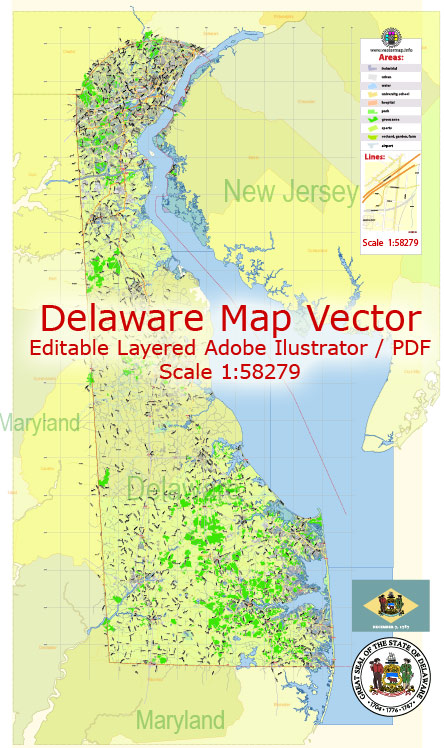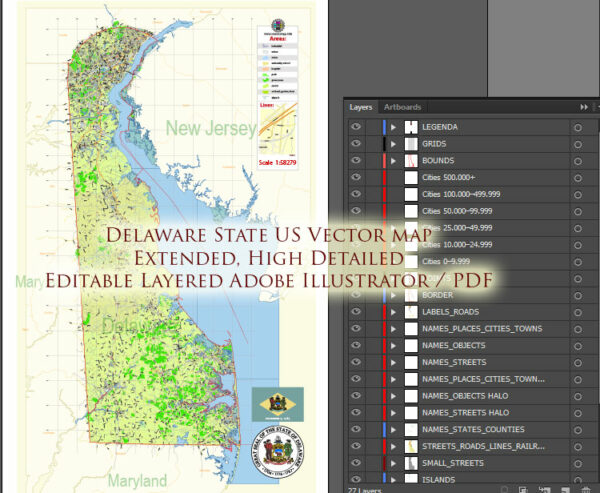Delaware, one of the smallest states in the United States, has a unique history of urban development that reflects its colonial past and economic evolution. While not as populous or urbanized as some larger states, Delaware has played a significant role in American history, and its urban development has been shaped by various factors.
- Colonial Origins:
- Delaware’s urban development dates back to its colonial roots. The city of Wilmington, located along the Delaware River, was originally settled by the Swedes in the 1630s. Later, the Dutch and English also established settlements, contributing to the city’s diverse cultural influences.
- Economic Foundations:
- The state’s early urban development was closely tied to its economic activities. Wilmington, in particular, became a hub for manufacturing and industry in the 19th century. Its location along major transportation routes, including the river and later railroads, facilitated the movement of goods and contributed to industrial growth.
- Industrialization and Innovation:
- Wilmington was home to various industries, including shipbuilding, leather tanning, and later, chemical manufacturing. The DuPont Company, founded in the early 19th century, played a pivotal role in the state’s economy. DuPont’s innovations in the chemical industry influenced the development of urban areas, leading to the growth of infrastructure and communities.
- 20th Century Changes:
- In the mid-20th century, urban development in Delaware, as in many other places in the U.S., was impacted by suburbanization. People and businesses began to move away from the city centers, leading to changes in the urban landscape. Wilmington, like other cities, faced challenges related to population decline and urban decay during this period.
- Revitalization Efforts:
- In recent decades, there have been concerted efforts to revitalize urban areas, including Wilmington. Redevelopment projects, historic preservation initiatives, and investments in infrastructure have aimed to rejuvenate downtown areas and attract businesses and residents back to the urban core.
- Economic Diversification:
- Delaware’s urban development has also been influenced by economic diversification. While manufacturing played a crucial role in the past, the state has seen a shift towards service industries, finance, and technology. The development of the financial services sector, in particular, has contributed to the growth of urban centers.
- Contemporary Challenges:
- Urban development in Delaware, like in many parts of the country, faces challenges such as affordable housing, transportation infrastructure, and social equity. Balancing economic growth with environmental sustainability and addressing issues of racial and economic disparities are ongoing considerations for urban planners and policymakers.
In summary, Delaware’s urban development has evolved over the centuries, shaped by its colonial history, economic activities, and responses to broader national trends. Today, the state continues to navigate the complexities of urban planning and development to create vibrant and sustainable communities.



 Author: Kirill Shrayber, Ph.D.
Author: Kirill Shrayber, Ph.D.